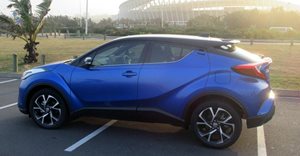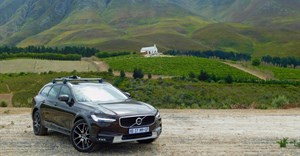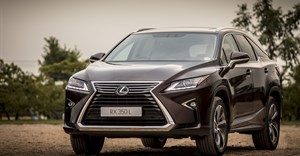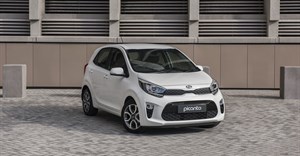
Subscribe & Follow
#RoadTest: Toyota C-HR 1.2T CVT Plus
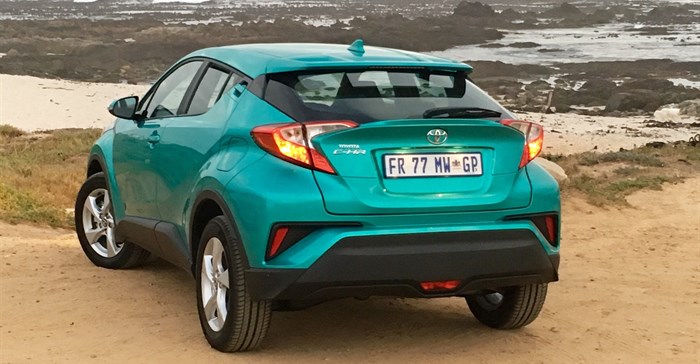
Having written about it when it was still only ‘a car to look forward to in 2017’, the C-HR (an acronym for Coupé high rider) launched locally in February, and I was tremendously excited to drive it.
Pioneering Japanese design
Toyota admitted that some of its cars were a little on the bland side, while its premium brand Lexus has been pushing the stylistic envelope for quite some time. For Toyota, the C-HR will be the game changer, heralding a completely new design direction for its Crossover-segment. People who scoffed at the thought of driving a boring-looking Toyota should now be sitting up and taking note. And judging from the reaction I’ve been getting all week, they are doing just that.
“Is that the new Rav4?”, people ask. Indeed, the nose and headlamps are similar to that of recent Toyota offerings, but the aggressively styled bumper, angular wheel arches and bold air intakes tell a different story.

Toyota describes this design concept as “sensual speed-cross”, a combination of smooth and sharp lines, and rounded and edgy curves. Side and rear profiles are especially fetching – agreed, there’s a smidgen of Honda Civic and Nissan Juke at the back, but in the C-HR it comes together beautifully and I am just smitten, so much so that I catch myself admiring it through the kitchen blinds every time I get up from my desk.
It may only be fitted with a 1.2-litre turbo petrol engine, but its coupé-styling and muscular lines make it seem fast and powerful. It has real presence, despite the fact that some of my friends aren’t exactly nuts about the ‘cosmic blue’ paint job, but I love how visible and vibrant it is.
Cabin convenience
The interior is light years apart from the somewhat conservative cabin of the new Corolla I was driving the week before. Even though the C-HR colour scheme is predominantly black, it’s interesting and fun, yet sophisticated.
The diamond design theme is echoed in the doors, switchgear, and even in the black headliner above. The flowing, triple-layer dashboard and touchscreen are angled towards the driver for maximum comfort and control, and when the light catches the piano black trim, it comes alive with minuscule specks of colourful glitter.

As for hard plastics – I didn’t notice any. Sitting up in the supportive drivers’ seat, I am snug as a bug in a rug. The new touchscreen is also a major step up in user-friendliness, compared to the finicky infotainment unit in the Corolla. Pairing my phone to the system was instantaneous, and I could easily save my frequently dialled numbers as speed dials in the system. Now that my iPhone was connected, I could store it beneath the dash in a nifty, phone-sized binnacle.
Size matters
But how big is it inside? The CH-R is a compact SUV, but it’s much roomier than you’d think. Its spaciousness was put to the test when I took the kids and grandparents out to lunch. My tall mom (who sat on the rear seat with the two kiddos) was very impressed with the legroom, but the kids complained about the vision-impairing upward-sloping rear windows - the usual downfall with coupés.
The boot is wide but shallow, so taller items are best stored flat on their side – this may be an issue for shopping enthusiasts and those who are unable to travel light. A full-size spare wheel lies underneath.
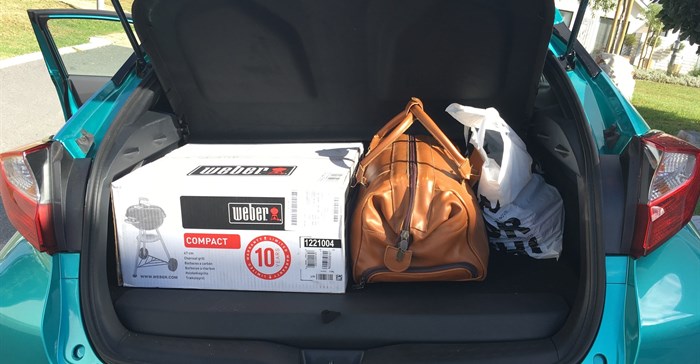
Behind the wheel
Toyota’s new 1.2-litre turbo petrol engine is small but intensively engineered. I am not going to bore you with the technical details, such as its ability to change from Otto to Atkinson cycles under low loads, so all you need to know is that it’s smooth, quiet, efficient, and positively perky.
85kW with 185 Nm of torque does not sound spectacular, but the CH-R is a compact little thing, despite having the spirit of a much larger SUV.
The continuous variable transmission gearbox in the flagship Toyota C-HR 1.2T CVT Plus variant is one of the best in the business, compared to the brilliant unit in the Honda Civic sedan, a Car of the Year 2017 finalist. Sure, it’s noisy if you press the accelerator flat from standstill, but when you’re cruising comfortably (at anything over 60km/h), and you need to make a quick move, it sounds unstrained and is enthusiastic to do your bidding. It can be driven in manual mode too, for more engagement.
As for handling, it’s composed, stable and predictable. A touch of body roll through a quick corner is not a deal-breaker for me.
Lifelines
ABS is complemented with EBD and brake assist. The number of airbags is two (in front) – I have to admit that two more side airbags would have been a welcome addition, but the standard stability control does give one added peace of mind.
I am also missing rear parking sensors – the thickness of the C-pillars makes it impossible to see what’s going on in the rear corners, and this stressed me out a little. Hill assist control is standard.
Verdict
It’s been a while since I’ve been so impressed with a compact SUV. Toyota’s new baby is a million-dollar one, at a reasonable price. The C-HR may not be perfect, but it’s perfectly close enough.
The flagship Toyota C-HR 1.2T CVT Plus retails for R356,000. The C-HR 1.2T 6MT costs R318,500, and the mid-level Toyota C-HR 1.2T 6MT Plus goes for R345,000. The warranty is valid for three years/100,000 km with a five-year/90,000km service plan. Service intervals are set at 15,000 km.
Source: AutoTrader

AutoTrader, SA’s No.1 for buying and selling cars. The fastest and easiest way to find cars, bikes, leisure, boats, trucks, commercial, plant, farm, car spares, accessories and more. The trusted motoring marketplace.
Go to: www.autotrader.co.za







